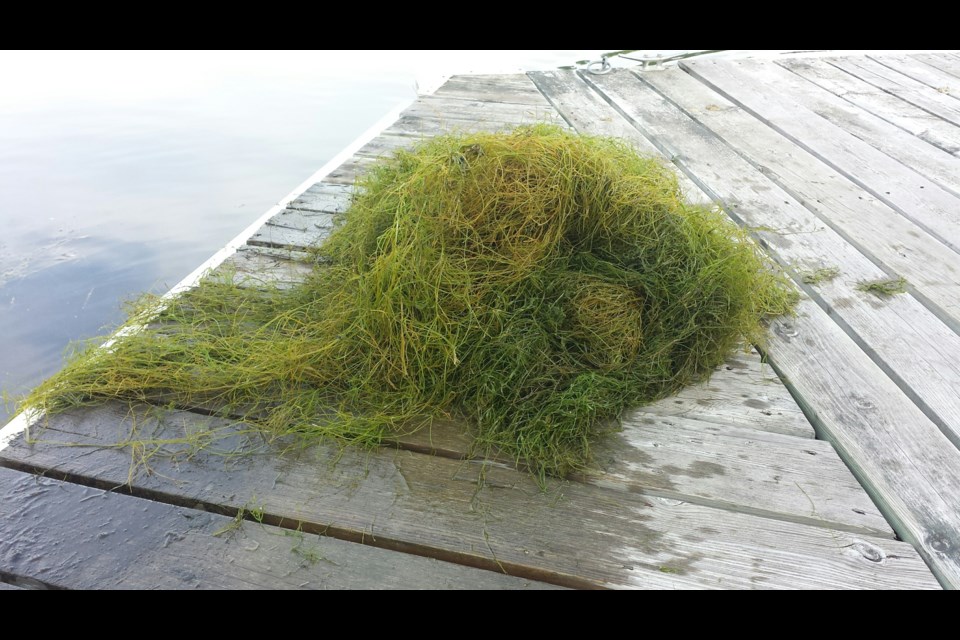Just when you think things are under control.
Staff with the Lake Simcoe Region Conservation Authority (LSRCA) were shocked by the results of this year’s survey of aquatic plants, conducted over a two-week period in August.
In 2013, the last time they sampled Lake Simcoe, native Coon-tail was the most common species in Cook’s Bay, followed by the invasive species Eurasian water-milfoil, and a native muskgrass, Chara – which is actually a type of algae.
This time, said Limnologist Brian Ginn, “Cook’s Bay is all starry stonewort.”
Stonewort is another macroalgae, and another invader. Native to Eurasia, it develops branching stems up to two metres in length, in water depths of nine to 10 metres, both salt and fresh, forming dense, impenetrable stands. It is named for the star-shaped reproductive “bulbils” that are produced, and deposited into the mud.
It’s become a real problem in some states in the U.S., especially Minnesota, New York and Indiana, where the dense stands choke out all other plant species, destroy fish spawning beds, and create tough tangles that even boaters have difficulty getting through.
“If we can’t get through it, fish can’t get through it,” said Ginn.
With nuisance stands of the alga just across the border, it wasn’t a total surprise that the aquatic invader made its way into Lake Simcoe. In fact, said Ginn, “in 2009 we found the little stars and I thought, 'Uh oh.'”
It first turned up in the Atherley Narrows, at the north end of Lake Simcoe, carried by either waterfowl, or by a careless boater. A marina in the Narrows sprayed herbicides to control Eurasian water-milfoil – and starry stonewort “exploded,” once the competition was removed.
The original infestation in North America was probably a result of bilge water being dumped. The subsequent spread of starry stonewort can probably be blamed on water birds, and boaters.
The 2018 LSRCA survey will sample 244 sites in the lake.
“Starry stonewort’s the big thing, so far,” said Ginn. “It’s just exploded. The first thing is to get the message out to boaters. Don’t just disentangle from the props and throw it into the water. That’s how it spreads.”
Dispose of the weed away from the water and ensure that all boats, motors, trailers and fishing gear are cleaned, drained and dried, before moving to a new location.
Information from the U.S. suggests that harvesting and herbicide use have limited impacts, especially since the stonewort seems to be resistant to the herbicides currently in use.
Right now, said Ginn, “We’re going to keep monitoring, and try to come up with a management strategy.”
He admitted, “It’s an ongoing battle, and this is going to be a big problem.”
Anyone who spots starry stonewort or any other invasive in the wild is asked to call the Invading Species Hotline, 1-800-563-7711, or report to www.invadingspecies.com or ontarioinvasiveplants.ca or to the Early Detection & Distribution Mapping System.
